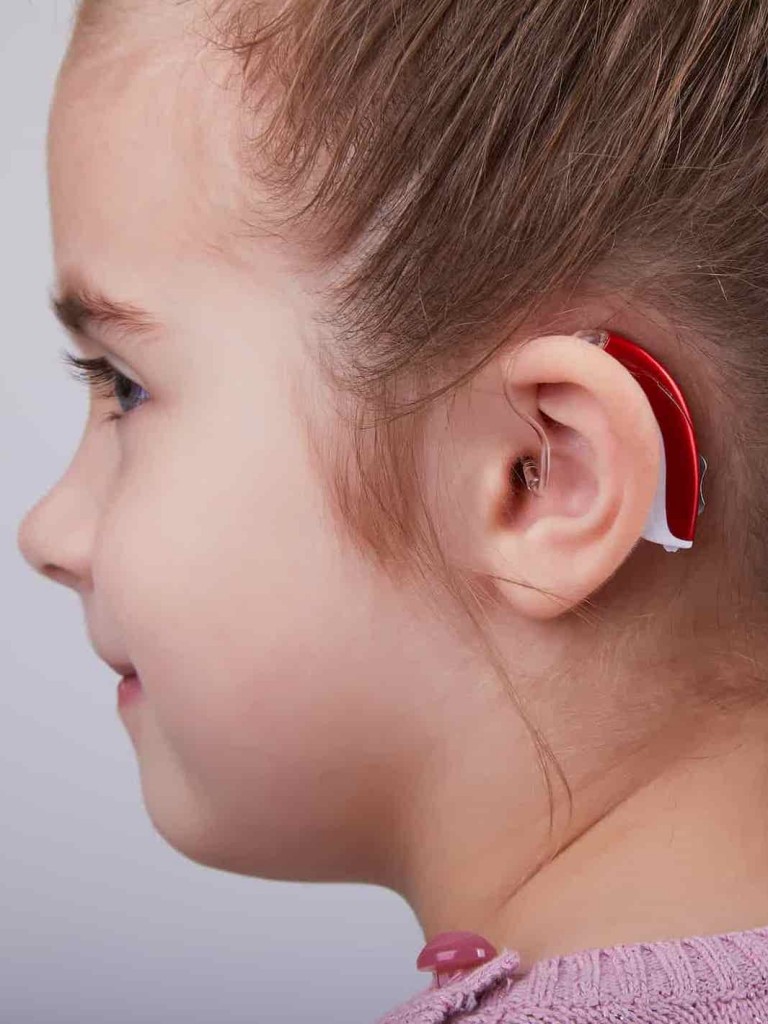The Daily Chime
Latest News

Ben Gillet
Principal Audiologist - Paediatric Lead
How to get your child used to their new hearing aid
Posted on 2021-05-28 16:05:00 in GeneralA lot of parents often ask us for advice on how to get children used to their new hearing aids.
When your child first starts wearing hearing aids, it's important they wear them regularly. This allows your child to get used to their new hearing aids. It also allows you and the audiologists to see your child’s progress with the help the hearing aids are providing. If your child is still struggling to get used to their new hearing aids, we recommend following the suggestions below to help them adjust.
Get used to new hearing aids by wearing them a couple of minutes every day
If necessary, build up the time gradually, start by wearing them for a couple of minutes several times a day and building the time up gradually. If your child keeps taking the hearing aids out, give them a break and try later when you are both more relaxed – Remember to make it a positive experience.
Make your child’s new hearing aids part of a routine
Try making hearing aids part of your child’s routine, so when they get dressed, they put the hearing aids in when they get up and take them out at night. Consistency is key like any other routine, for example, brushing their teeth.
Put your child’s new hearing aids in when they are distracted
Try distracting your child with their favourite toy when you put the aids in or put them in while your child’s concentrating on something, such as their favourite TV program.
Warm the earmoulds before putting them in your child’s ears
Holding the earmoulds in your hands for a couple of minutes prior to putting them in can help warm them up so that the difference is less noticeable for your child, and the earmoulds are softer and easier for you to insert in their ears.
Change the earmould positions to lessen feedback
If the aids whistle this is feedback and can be due to loose earmoulds or a wax build up in the ear. If the hearing aids are powerful it can also be due to their close proximity to other objects and can commonly occur when babies are feeding or if they are in a close-fitting car seat. The chance of feedback can often be lessened by changing their position in these instances.
Check your child’s new hearing aid’s amplification with your audiologist
If you notice your child removing the aids after adjustment or blinking at loud sounds it is worth checking with the audiologists to ensure your child’s amplification is appropriate and effective.
Use hearing aid retaining clips to help your child’s new hearing aids stay secure
Young active children can be helped to keep hearing aids on with hearing aid retaining clips which are available and should be supplied by the audiology department and help secure the hearing aid to stop them moving around in a distracting manner.
Reward your child for using their new hearing aids
Try to reward your child for good hearing aid use. You could use a sticker chart to record every time your child wears their hearing aids and give them a special treat if they wear them well throughout the week.
Start by only using one hearing aid
You could also encourage your child to wear one aid at first and slowly extending the time they wear it if they are initially particularly reluctant. When they wear it for longer periods try introducing the other aid.
Let your child choose the colour of their new hearing
Hearing aids are available in different colours and these should be offered to your child prior to the initial fitting appointment and at every hearing aid upgrade your child is due for. You can also help your child to decorate them.
Here is a link to the NDCS tips on how to personalise hearing technology and you can visit the Facebook page Pimp my hearing aids/cochlear implants UK for more information.
Further advice on how to get your child used to their new hearing aid
We would encourage your family to meet other families with a deaf child so that your child doesn’t feel alone with respect to wearing hearing aids. There are monthly Happy Hands groups held where there is provision for this and advice from advisory teachers and audiologists in a fun environment. There are also local Children’s Hearing Services Working Group (CHSWG) that we encourage you to contribute to, helping to inform the service we are providing.
Please also see our recent article on how long does it take to get used to a hearing aid for further suggestions.
The NDCS also have useful links to books like Jake and Jasmine to the Rescue and Daisy and Ted's Awesome Adventures, which are children's storybooks designed to support deaf children.

